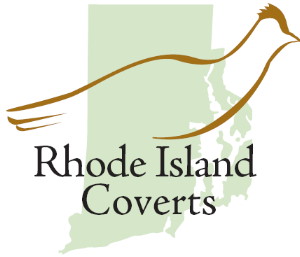|
  THE ISSUE THE ISSUE
Rhode Island's forests provide habitat to a large variety of wildlife species. While
forests cover 59 percent of Rhode Island, wildlife biologists and foresters are finding that forest fragmentation and loss of habitat is having a detrimental effect on many
bird species and other wildlife. For instance, twelve of sixteen shrubland birds and seven of ten grassland birds have declining population trends in the region. Many
are listed as threatened or endangered in several northeastern states. Additionally, American woodcock have declined by 40% over the past 30 years, ruffed grouse
have largely disappeared from southern New England, and the New England cottontail occur in only 20% of the area that this species was historically found.
The issue is that most of the state's 393,000 acres of forest are owned by an
estimated 38,000 private individuals who own 50 acres or less. These small tracts of land have become fragmented by roads, homebuilding and other developments
which have disrupted wildlife corridors. In addition, forest landowners with small amounts of forest land are less likely to manage their property for wildlife habitat protection.
RI RC&D, working with numerous partners, has started the Rhode Island Coverts Program in Rhode Island to help woodland
owners conserve their land and protect wildlife habitats in an effort to sustain forests and prevent further fragmentation.
 RHODE ISLAND COVERTS PROJECT RHODE ISLAND COVERTS PROJECT
The Rhode Island Coverts Project is the latest program to help landowners. The Coverts Project is a special educational
program developed jointly by Cooperative Extension Systems in Connecticut and Vermont and the Ruffed Grouse Society in 1983.
Since then it has expanded to eleven other states across the northeastern U.S. with the exception of the state of Rhode Island.
Covert (pronounced cover with "t") is a word that describes a thicket that provides shelter cover for wildlife.
The goal of the Project is to show individual woodland owners how sound forest management practices can make wildlife
healthier, more diverse, and more abundant through improved wildlife habitats. Actively managed demonstration areas are used
as outdoor classrooms. A well-designed covert will provide food sources, nesting sites, and protection from snow, ice, and
predators. One example of a covert is a tree and shrub thicket that provides shelter for wildlife such as quail, rabbits, pheasants
, turkeys and songbirds. A tree and shrub covert can be established through natural regeneration, enhancing existing thickets,
or designing and planting a thicket from scratch on open ground. Snags (standing or fallen dead trees) are another example of a
covert that can benefit wildlife. Snags provide nesting or den sites as well as insects as a source of food for wildlife such as
birds. Cavity nesting birds that reduce insect and rodent populations and provide color and song, need snags to thrive.
 COVERTS PROJECT COOPERATORS COVERTS PROJECT COOPERATORS
Each year the Rhode Island Coverts Project seeks woodland owners and other interested individuals who want to learn more
about their forests and the wildlife that live in them in exchange for a commitment to share that knowledge with others in their
community. Up to twenty-five (25) woodland owners are chosen annually to participate in the two and one-half day workshop
that focuses on forest ecology and stewardship, wildlife management and land conservation. The training consists of both indoor
and field sessions, as well as informal time to learn from fellow participants. In addition, each participant is given materials to
take home. The seminar includes meals, lodging, and reference materials that allow them to either answer questions on forest
and wildlife management, or direct the questioner to the proper professionals. In exchange, participants are asked to return to
their communities and share what they've learned with others and work to help build a statewide Cooperator network.
Now in its 7th year, the project has trained 100 landowners from across the state. A model of a successful partnership , the
participating landowners cumulatively own and manage 2,012 acres and manage another 6,234 acres for other people and/or
groups. To date, the participants have entered into over $800,000 of conservation contracts with USDA NRCS to implement forest and wildlife habitat management on their properties.
|
|
|
|
2009 Coverts Cooperator Class
LEARN MORE
|
2008 Cooperators track American Woodcock
at Great Swamp Mgmt. Area
|
|
 SOME SPECIES THAT BENEFIT FROM A COVERT
SOME SPECIES THAT BENEFIT FROM A COVERT
|